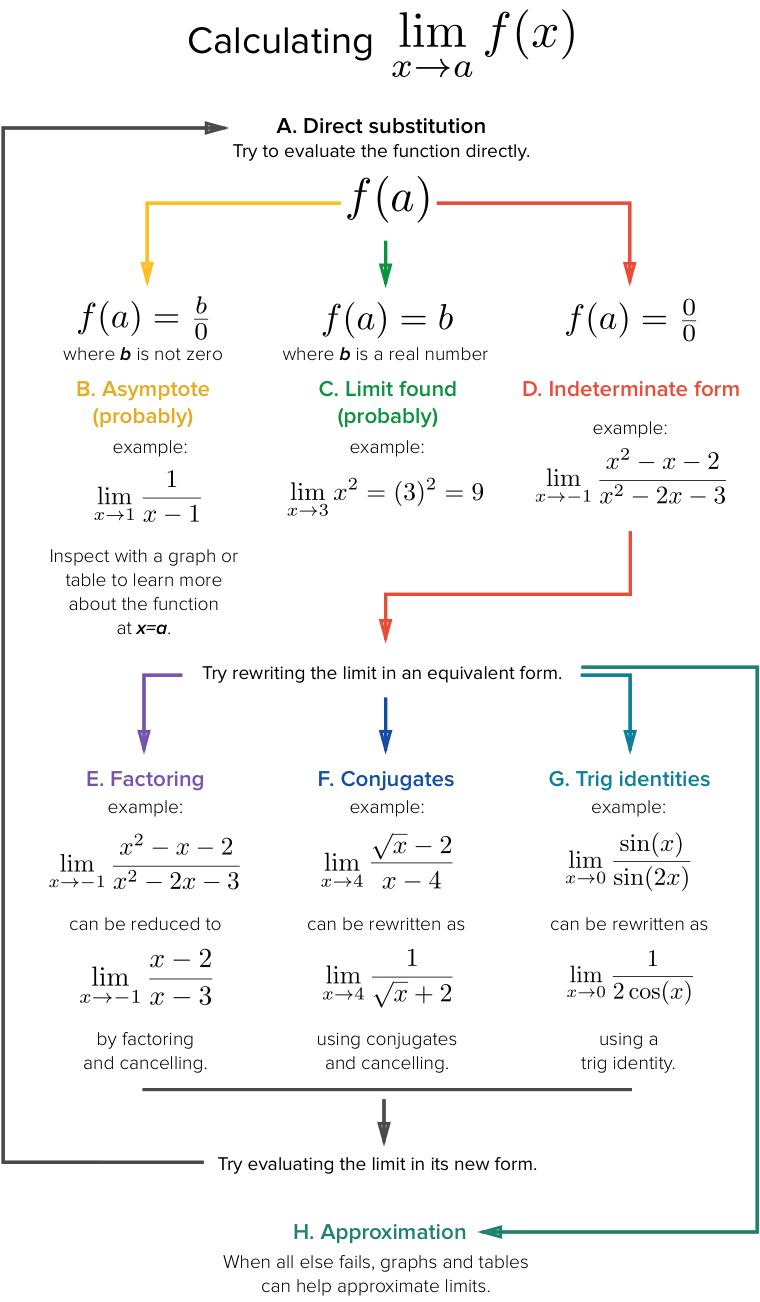
The vertical line \(x = a\) is called the vertical asymptote of the curve \(y = f(x)\) if at least one of the following statements is true:
Also:
To my understanding, if there is a vertical asymptote at \(x = a\), then \(\lim_{x \to a}f(x)\) is technically undefined. But instead, of saying undefined, we say \(\pm \infty\) since it gives more information. I.e. this is a special case of being undefined.
Suppose that \(c\) is a constant and that the limits \(\lim_{x \to a} f(x)\) and \(\lim_{x \to a} g(x)\) exists, then:
\(n\) must be a positive integer.
\(n\) must be a positive integer.
If \(n\) is even, we assume that \(\lim_{x \to a} f(x) > 0\).
Suppose that \(f\) is continuous on the closed interval \([a, b]\), and let N be any number between \(f(a)\) and \(f(b)\), where \(f(a) \neq f(b)\), then there exists a number \(c\) in \((a, b)\) such that \(f(c) = N\).
Or alternatively, suppose \(f\) is a function that is continuous at every point in the interval \([a, b]:\)
The IVT can be used to show that a root exists, if given some interval between \(a\) and \(b\):
or
then therefore, if the function is continuous, then there must be a value for which some \(x\) in \(f(x) = 0\) exists. I.e. that a root exists. Which should make sense.
**More generally**, this can be extended to any value between some interval. For instance, if:
Then there must exist some value that we will call \(x\), for which: